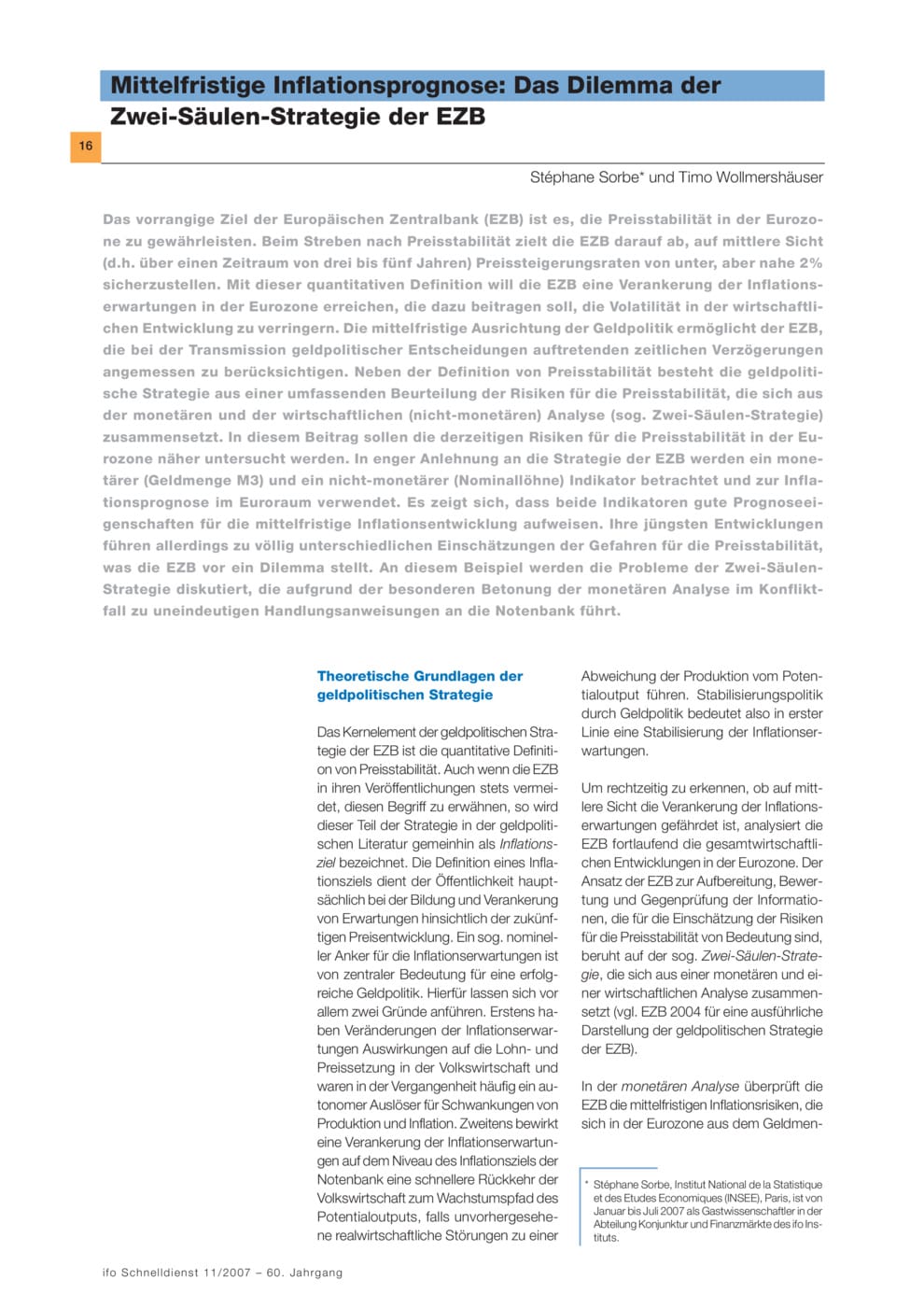Medium-term inflation forecast: The dilemma of the two pillar strategy of the European Central Bank
ifo Institut für Wirtschaftsforschung, München, 2007
ifo Schnelldienst, 2007, 60, Nr. 11, 16-24

The goal of the European Central Bank (ECB) is to safeguard price stability in the eurozone. In its efforts directed towards price stability, the ECB aims at ensuring rates of price increases of approximately, but close to 2%. With this quantitative definition, the ECB seeks to achieve an anchoring of inflation expectations in the eurozone that will contribute to reducing volatility in the economy. Along with the definition of price stability, the monetary policy strategy includes a comprehensive assessment of the risks that price stability faces, consisting of a monetary analysis and an economic (non-monetary) analysis, or the so-called two-pillar strategy. In this contribution, the current risks facing price stability in the eurozone are examined. Taking into consideration the strategy of the ECB, two indicators are examined - a monetary (M3 money supply) and a non-monetary (nominal wages) indicator - and are used for an inflation forecast for the euro area. The result is that both indicators display good forecasting properties for the medium-term course of inflation. Most recent developments, however, lead to completely differing assessments of the dangers facing price stability -a dilemma for ECB decision making.